Portal for more climate-friendly mobility
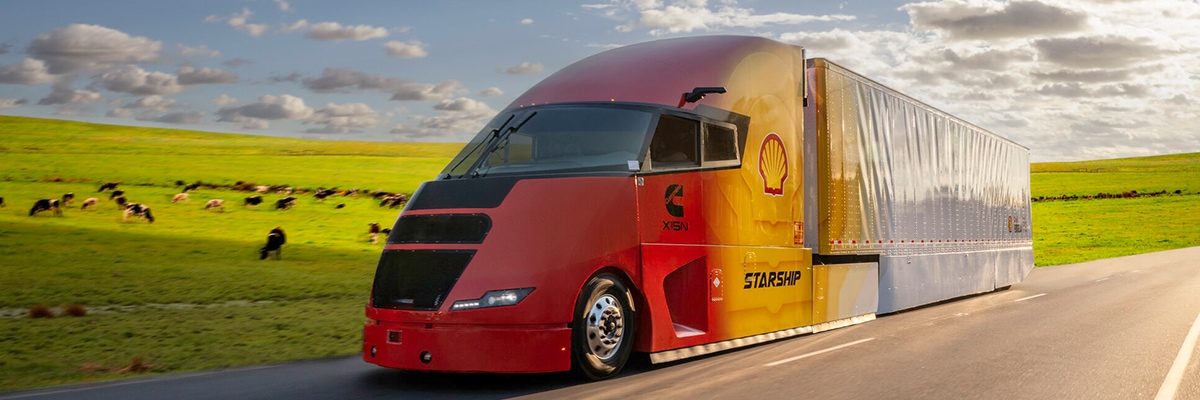
Shell Starship on record hunt
Full throttle into the future: at least this is true in America, where Shell is currently on an efficiency drive with the futuristic Starship 3.0 and can show impressive savings. In the EU, on the other hand, biogas or LBG/Bio-LNG is being slowed down as a drive option for commercial vehicles.
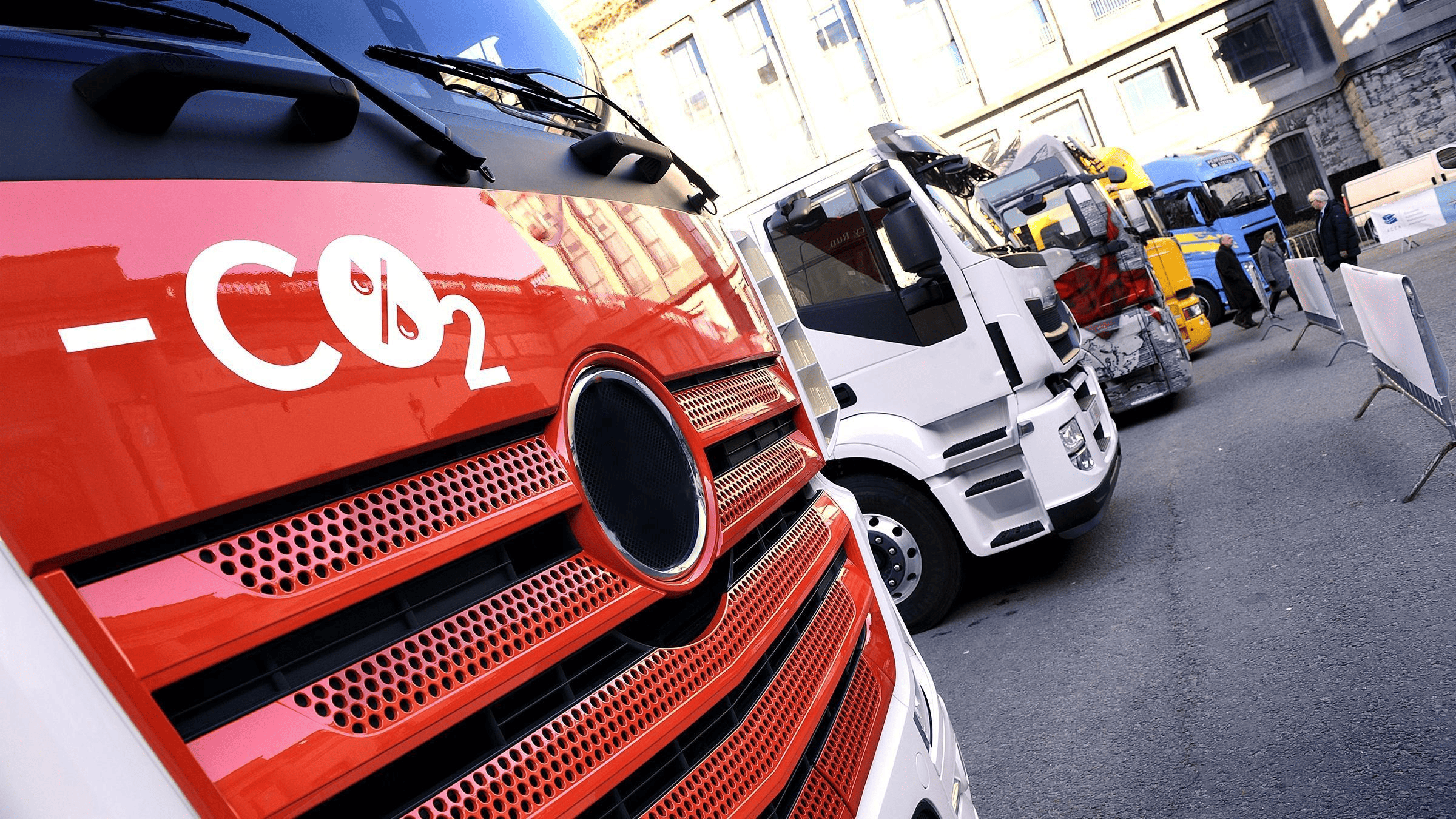 More and more CNG-powered and LNG-powered trucks are being used in heavy-duty transport throughout Europe and are already contributing to CO2 reductions. Source: Acea
More and more CNG-powered and LNG-powered trucks are being used in heavy-duty transport throughout Europe and are already contributing to CO2 reductions. Source: Acea
A quarter of the CO2 emissions from road traffic in Europe come from the heavy-duty sector alone. A study by researchers from the University of Applied Sciences of Eastern Switzerland (OST) and other European scientists recently showed that at least 37 per cent of the European truck fleet must be powered by renewable energies by 2030 in order to achieve the reduction targets desired by politicians. The experts deliberately looked at the whole range of powertrains. The scientists’ most important recommendation: strict and fair regulations so that all renewable technologies can contribute to CO2 reduction.
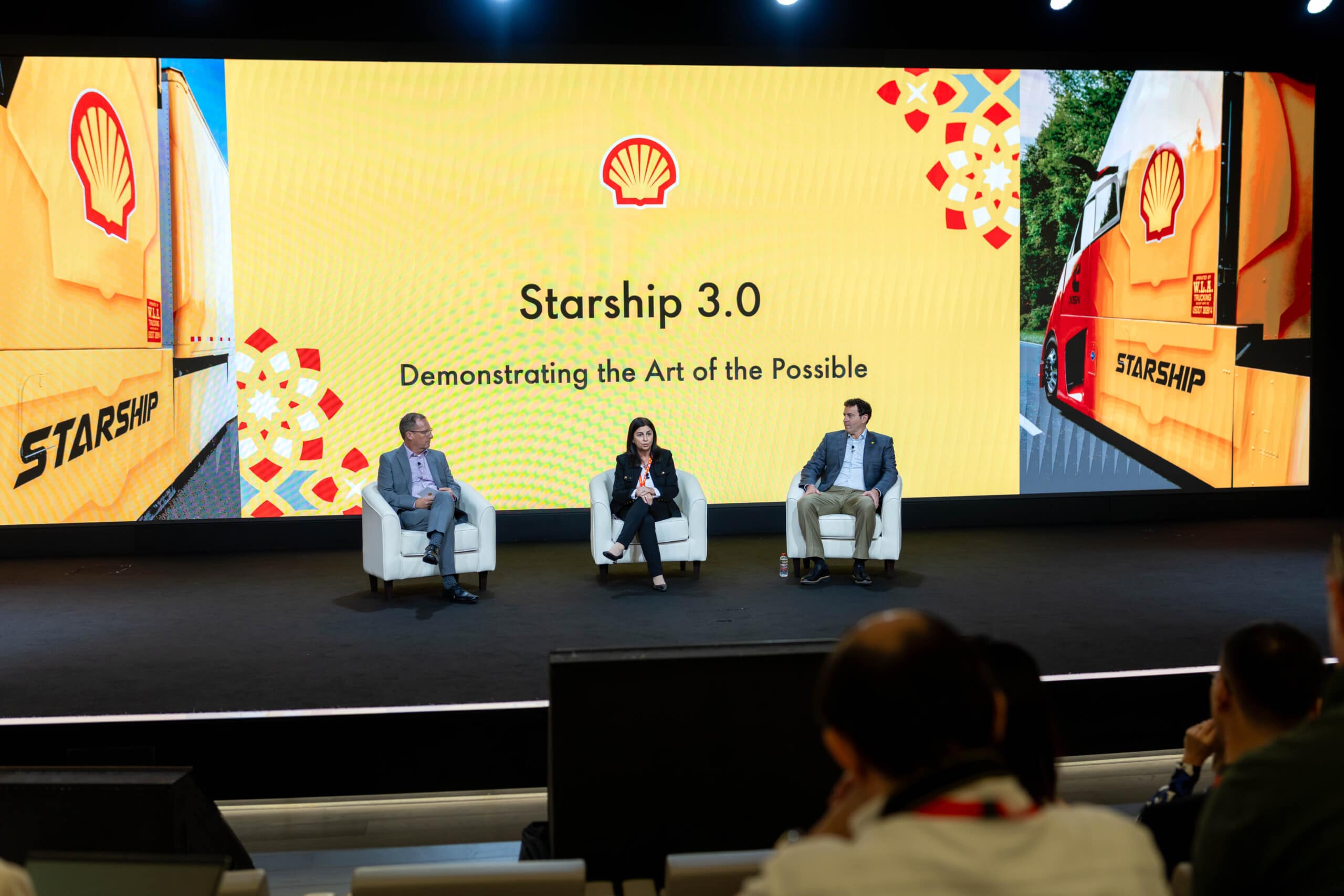 At the “Ultimate Stop Over” event, experts not only discussed the future of transportation and logistics, but also presented the first efficiency results of the Shell Starship Truck powered by Cummins CNG. Source: Shell
At the “Ultimate Stop Over” event, experts not only discussed the future of transportation and logistics, but also presented the first efficiency results of the Shell Starship Truck powered by Cummins CNG. Source: Shell
The experts advocate that at least well-to-wheel approaches (promotion to use in driving) be applied to the emission targets for heavy goods vehicles in future. The EU Council and now also the Environment Committee of the EU Parliament did not listen to this. With the EU proposal now adopted, almost all new heavy-duty vehicles with certified CO2 emissions – smaller trucks, city buses, coaches and trailers – are subject to the emission reduction targets. And a technology-open approach that would also allow the use of biogas or hydrogen engines is currently missing from the legislative text.

“With proposals that exclude the use of CO2-neutral fuels and technologies that can accelerate the industry’s ability to rapidly decarbonise, this regulation risks leaving several segments of heavy-duty transport behind,” explains Benjamin Krieger, Secretary General of the European Association of Automotive Suppliers, Clepa. “Europe needs a regulatory framework that allows for technology diversity and affordable solutions.”
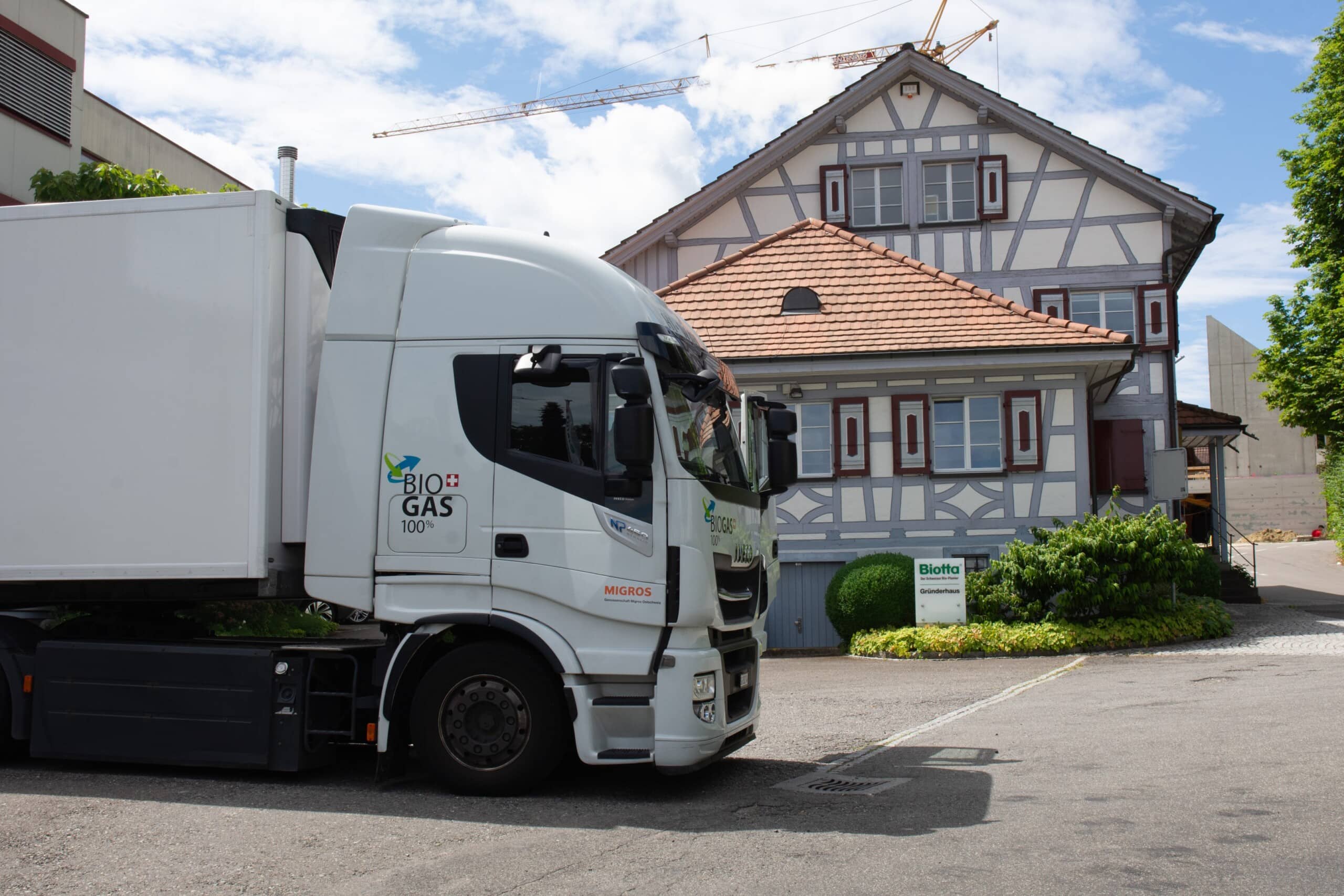 Thanks to a biogas truck from Migros Ostschweiz and a clever combination of the different transport options, natural juice producer Biotta can already save around 3 tons of CO2 during transport. Source: GMOS – Natalie Löhrer
Thanks to a biogas truck from Migros Ostschweiz and a clever combination of the different transport options, natural juice producer Biotta can already save around 3 tons of CO2 during transport. Source: GMOS – Natalie Löhrer
And Sigrid de Vries, Director General of the Association of European Automobile Manufacturers (Acea), was even more explicit with her criticism: “Decarbonising heavy-duty transport is not a solo effort. We are working in a highly interconnected transport ecosystem. To create an environment where vehicle manufacturers can thrive and achieve their goals, we need a joint effort from all stakeholders including policy makers.”

How CO2 emissions can be massively reduced with current technology is being demonstrated almost simultaneously in the land of unlimited possibilities and endless highways by, of all people, an energy and oil giant. In America, Shell is sending the futuristic, bright orange-yellow Starship truck on an economy run again – and with a CNG drive from Cummins. Gas trucks emit up to 35 percent less CO2 than comparable diesel trucks. If they run on biogas, they are even almost CO2-neutral. And the values of the Shell Starship 3.0 are also impressive.
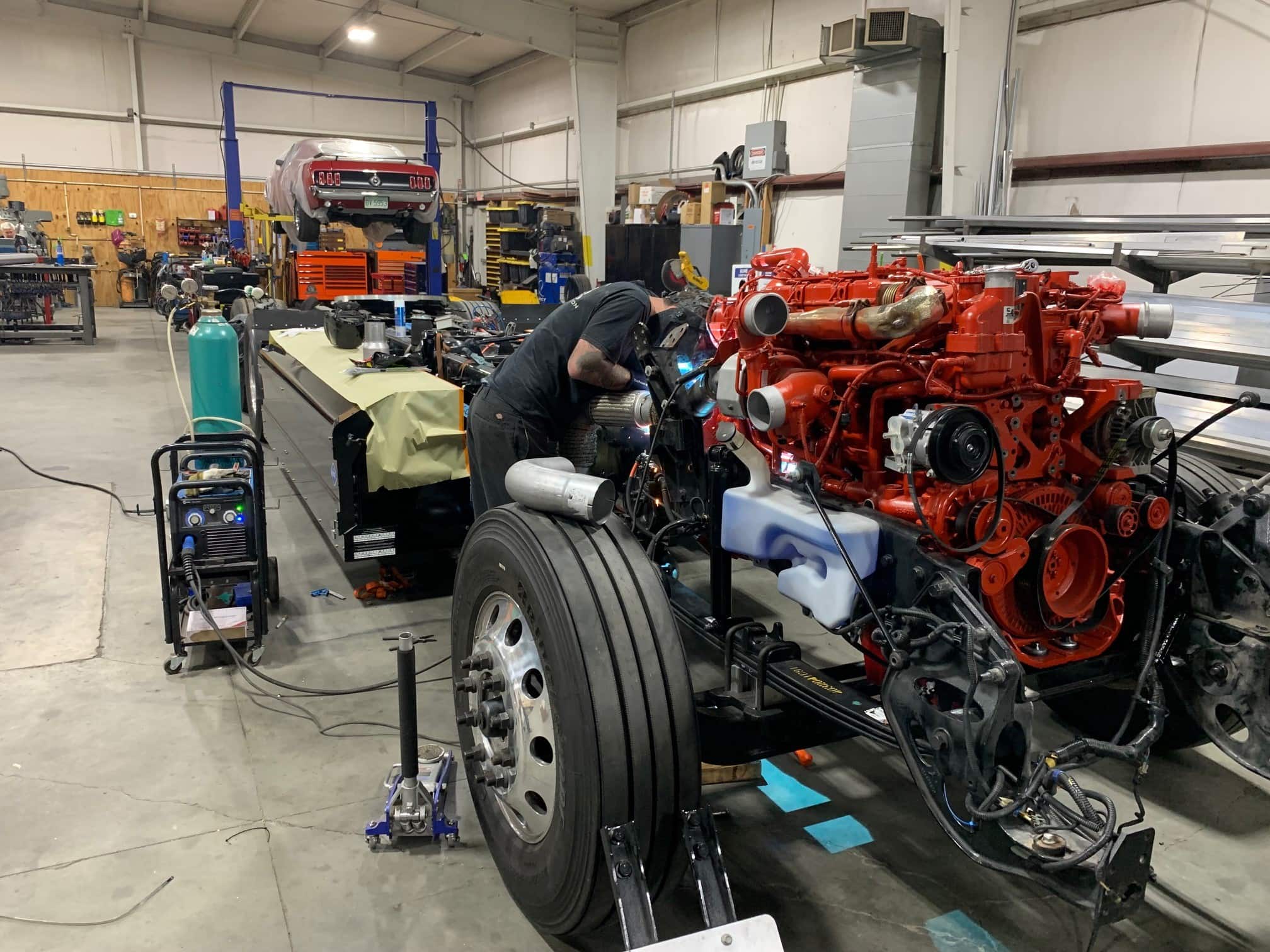 Specialty vehicle company Spevco and Reaper Custom Fabrication are currently rebuilding or upgrading the Shell Starship 3.0. Source: Shell/Cummins
Specialty vehicle company Spevco and Reaper Custom Fabrication are currently rebuilding or upgrading the Shell Starship 3.0. Source: Shell/Cummins
The fiery red X15N large-piston CNG engine from Cummins, which weighs less than its diesel counterparts, delivers up to 500 hp and already meets the strict EPA and carb emission regulations for 2024 and 2027. On its first demonstration run on the US West Coast, the Starship collected key performance data with a fully loaded trailer on an 840-mile loop through California. The result: compared to an average US diesel truck, the future truck manages 2.542 times better freight tonne efficiency on a tonne miles per gallon basis and 3.23 times better freight tonne efficiency on a tonne miles per kilo of CO2 emitted basis. Promising values that will now be verified and further improved on further demonstration runs.
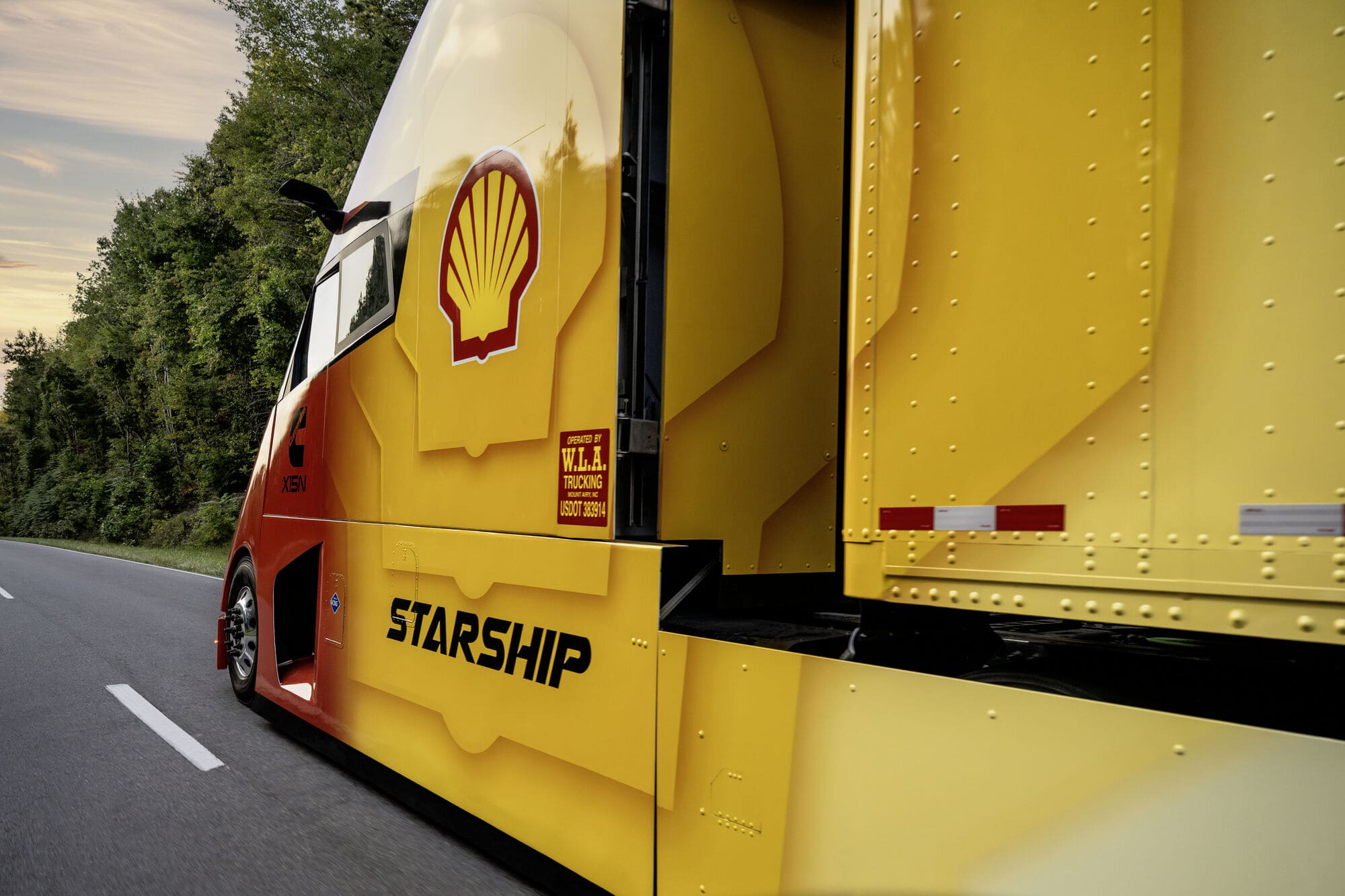 Optimized for best aerodynamics, the Shell Starship 3.0’s cabin also helps the truck get from A to B as efficiently as possible. Source: Shell
Optimized for best aerodynamics, the Shell Starship 3.0’s cabin also helps the truck get from A to B as efficiently as possible. Source: Shell
“Shell Starship is an example of how industry collaboration can pave the way to more sustainable solutions,” Tom Mueller, General Manager of Shell Commercial Road Transport Lubricants, proudly explains. The US truck also demonstrates how multiple innovative, open-technology solutions and cross-industry collaborations help achieve a common goal.
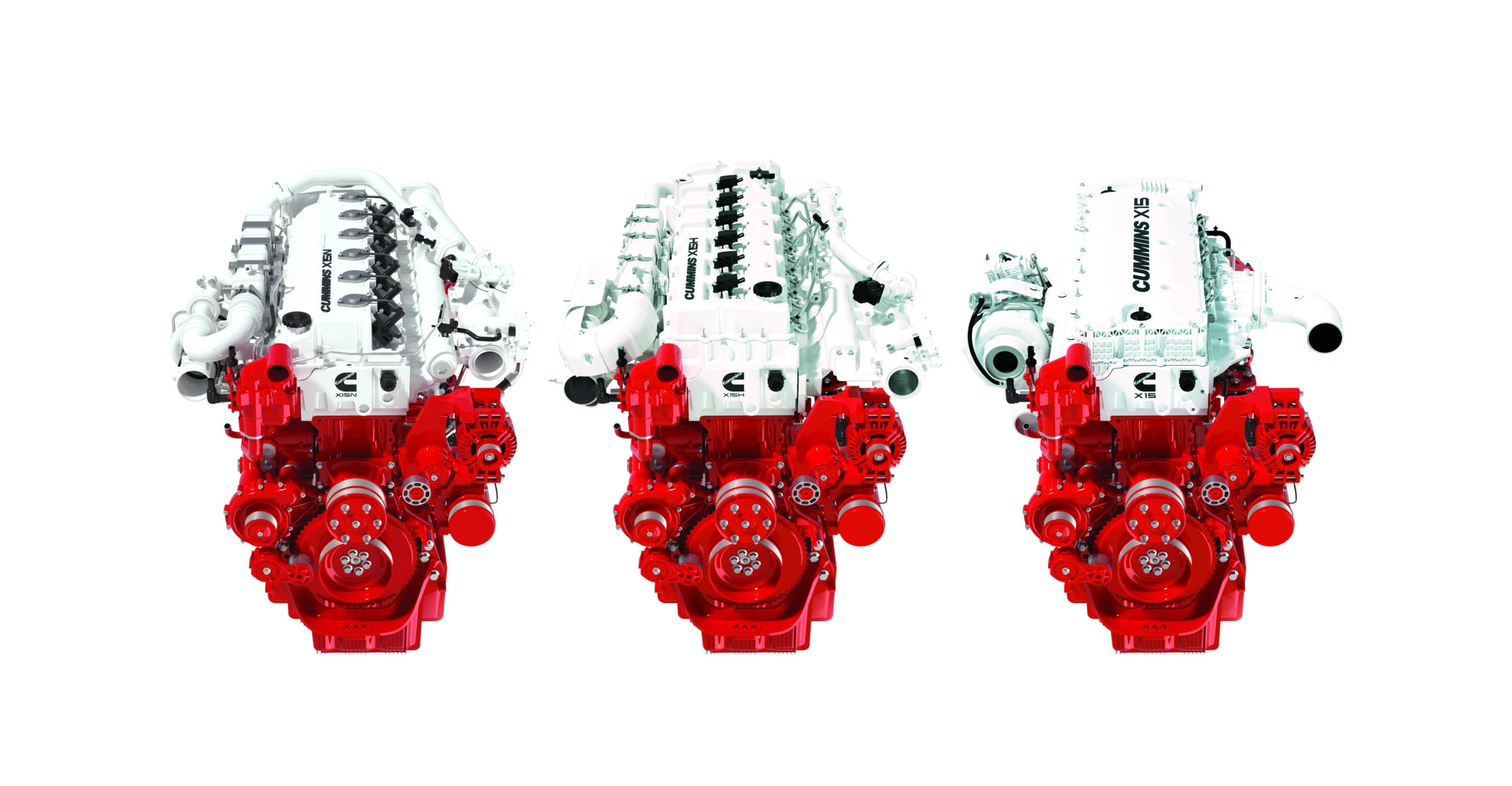 Engine specialist Cummins is deliberately open to new technologies, which is why the new generation of large piston engines can burn hydrogen as well as diesel and biogas. Source: Cummins
Engine specialist Cummins is deliberately open to new technologies, which is why the new generation of large piston engines can burn hydrogen as well as diesel and biogas. Source: Cummins
And Shell and Cummins‘ point in using the X15N large-piston CNG engine is not to promote this propulsion system as the sole solution for the future, but only to demonstrate its versatile application possibilities, which already enable significant CO2 reductions now and not in the future. The engine specialist has developed a fuel-independent platform with 15- and 10-litre displacements, which is suitable for hydrogen with direct injection and lean combustion, as well as for biogas and diesel. So the industry continues to go full throttle for the lowest possible CO2 values – regardless of the fuel! (jas, 24 October 2023)
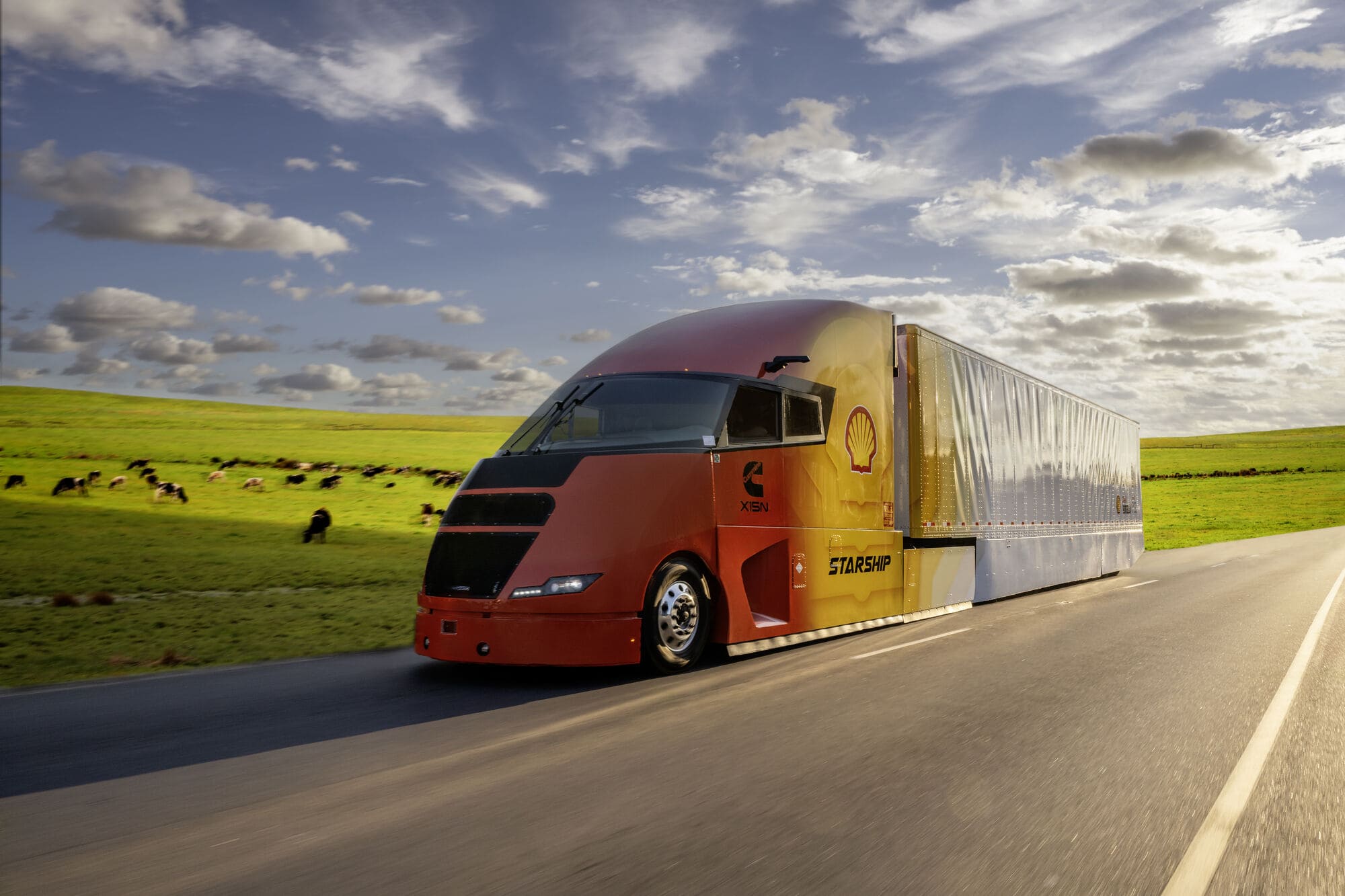 The notice on the door X15N and the Cummins logo make it clear with which promising and today already applicable drive the truck is on the road in America. Source: Shell
The notice on the door X15N and the Cummins logo make it clear with which promising and today already applicable drive the truck is on the road in America. Source: Shell
You might also be interested in
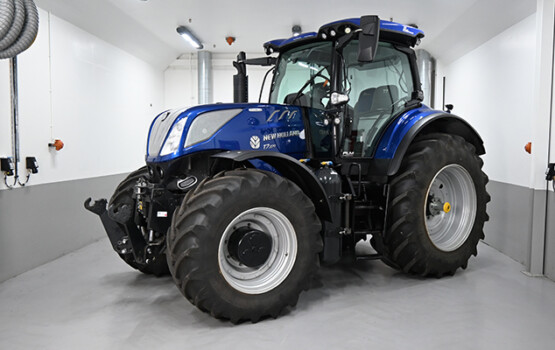
New Holland presses the accelerator
